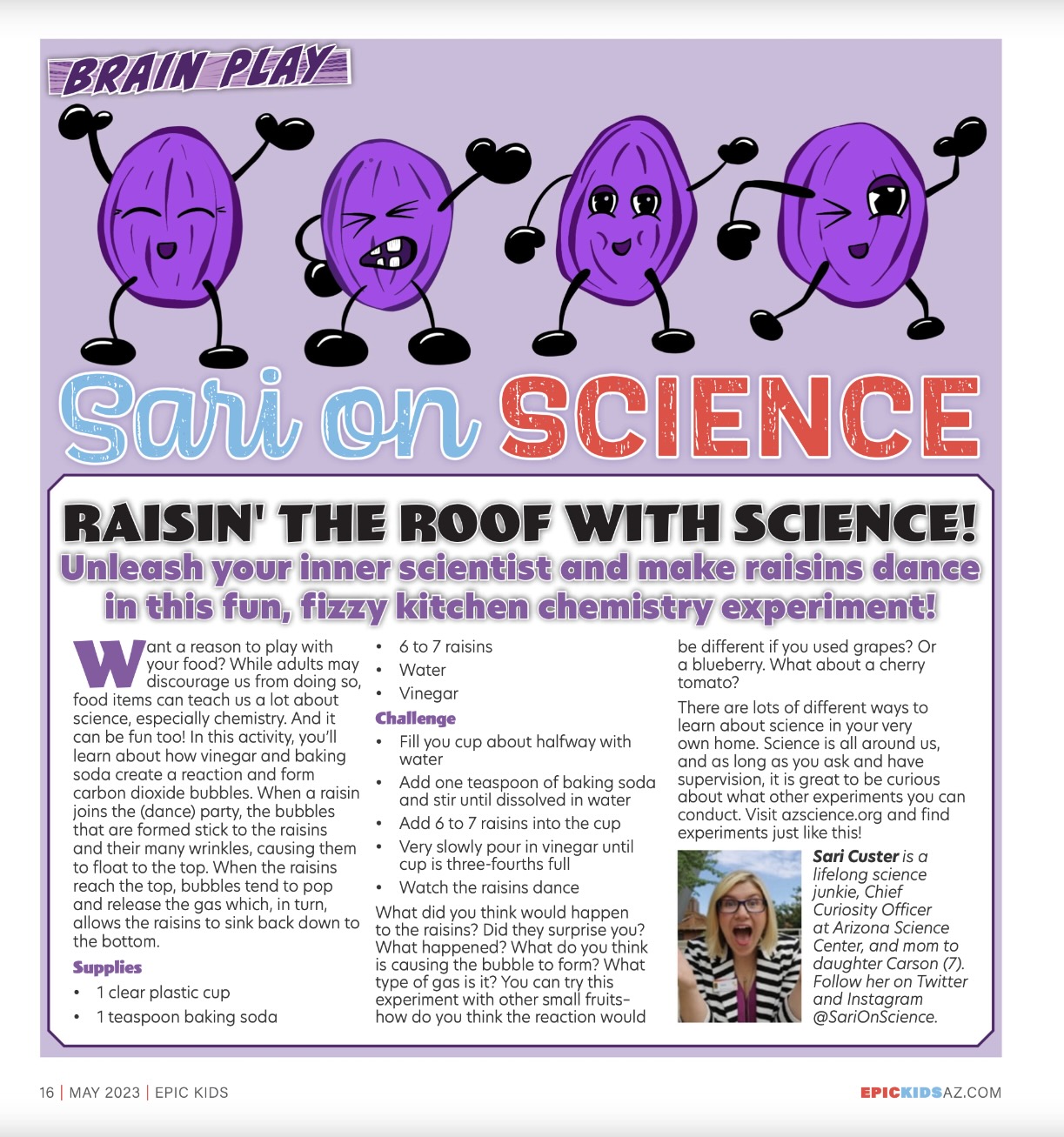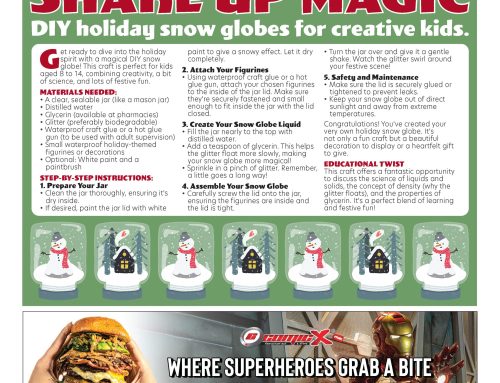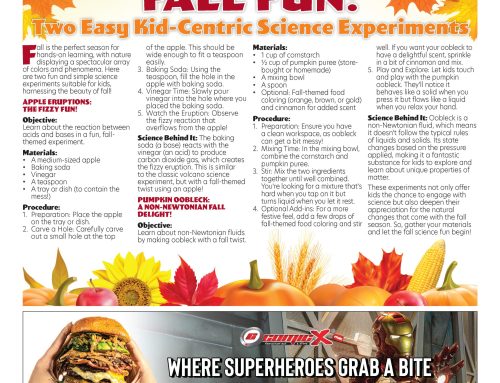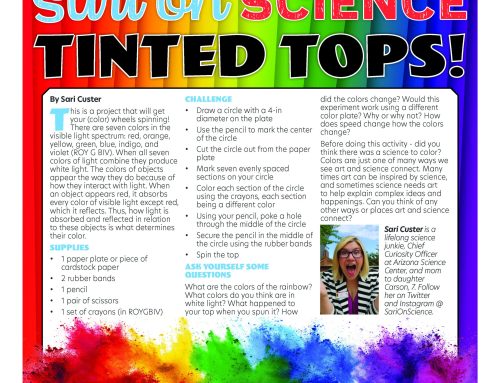Want a reason to play with your food? While adults may discourage us from doing so, food items can teach us a lot about science, especially chemistry. And it can be fun too! In this activity, you’ll learn about how vinegar and baking soda create a reaction and form carbon dioxide bubbles. When a raisin joins the (dance) party, the bubbles that are formed stick to the raisins and their many wrinkles, causing them to float to the top. When the raisins reach the top, bubbles tend to pop and release the gas which, in turn, allows the raisins to sink back down to the bottom.
Supplies
- 1 plastic cup
- 1 teaspoon baking soda
- 6 to 7 raisins
- Water
- Vinegar
Challenge
- Fill you cup about halfway with water
- Add one teaspoon of baking soda and stir until dissolved in water
- Add 6 to 7 raisins into the cup
- Very slowly pour in vinegar until cup is three-fourths full
- Watch the raisins dance
What did you think would happen to the raisins? Did they surprise you? What happened? What do you think is causing the bubble to form? What type of gas is it? You can try this experiment with other small fruits––how do you think the reaction would be different if you used grapes? Or a blueberry. What about a cherry tomato?
There are lots of different ways to learn about science in your very own home. Science is all around us, and as long as you ask and have supervision, it is great to be curious about what other experiments you can conduct. Visit azscience.org and find experiments just like this!






